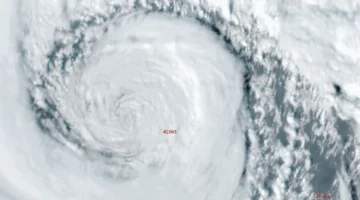Students don’t just learn farm-to-table, they practice it
By TRAVIS GIBSON, The St. Augustine Record
ST. AUGUSTINE, Fla. (AP) — To pick the perfect ingredients for a lunch menu at Walter’s Reef, a restaurant located on the campus of First Coast Technical College, Chef Kyle Forson only had to walk a few hundred yards to a garden on the other side of campus.
Once there, he plucked organic microgreens and edible flowers grown by Nursery Management students in rows of pots within view of St. Augustine High School. In nearby locations grows spinach, arugula, radishes, Brussels sprouts, borage and five different types of cauliflower. Each vegetable will eventually be used on the menu at Walter’s Reef and prepared by students enrolled in the culinary program. …
“It’s unbelievable. It’s what I dreamed of my entire culinary career,” said Forson, who has worked as an executive chef at high-end restaurants in Atlanta. “If I ever had the opportunity to open my own restaurant, it would have been the theme of what we are doing in school here.”
Forson and Chef Anthony Lowman are leading the culinary program that is working hand-in-hand with Nursery Management students to bring the increasingly popular concept of farm-to-table, a movement that promotes serving local food at restaurants and school cafeterias, preferably through direct acquisition from the producer.
“They have always worked together but not to this scale,” said FCTC’s principal, Chris Force. “In the past they would get the leftovers from the Agriscience program, but now it’s more intentional.”
Robert King, a lab assistant working in the Agriscience program, said they take the ideas that Forson has and try to grow things that are seen in high-end restaurants and not easily found in grocery stores. Instead of doing typical carrots, for example, FCTC students grow tri-color baby carrots which have a unique sweetness. During fall and winter months, the school will grow 60 varieties of vegetables along with succulents and peppers that are sold to local buyers.
“By having this resource, the students can actually see what the product would look like which helps on the culinary end when they are doing inspections,” said Charles Harper who oversees the culinary program.
Harper said the program really started taking off last year and has saved the school close to $2,000 because it doesn’t have to seek outside vendors for most many ingredients.
“It doesn’t sound like a lot but when you are a school working under a budget, it is a lot,” Harper said.
Chase Asner has been a student in both programs, starting out in the culinary program before switching over to nursery management.
“Those two worlds need each other,” Asner said. “The problem with obtaining really good ingredients is the distance that it needs to cover to get to the restaurant. What’s better than having an area to grow fresh vegetables and herbs than right on the campus itself?”
For Forson, it’s all about taste.
“The difference between (tri-color carrots) and the giant horse carrots that come from the produce company, almost speaks for itself,” Forson said. “(Conventional carrots) aren’t grown for flavor. It’s night and day.”
FCTC said it would like to expand both of the programs but that will likely only happen if more students enroll. Forson said he hopes the farm-to-table concept will become less of a trendy concept and more of a way of life with his students leading the way.
“In order to be environmentally conscious, we have to get back to cooking with local or we are going to dry up our resources,” Forson said. “You shouldn’t have to say “Farm to Table” … it should be expected.”
___
Information from: The St. Augustine (Fla.) Record, http://www.staugustine.com










No Comment